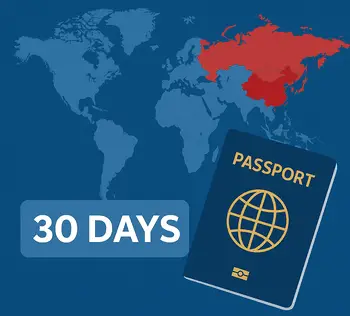
China’s rapidly evolving workplace culture presents unique challenges for both local and expatriate professionals seeking sustainable work-life balance.
While the country’s economic success has been built on a foundation of intense work dedication, recent social and regulatory shifts are reshaping how Chinese employees and employers view workplace wellness.
This comprehensive guide examines the complex realities of work-life balance in contemporary China, backed by recent research and practical strategies tailored to the Chinese context.
The Current State of Work-Life Balance in China
Statistical Overview
According to recent studies, work-life balance in China presents stark contrasts across different demographics and industries:
| Demographic | Work-Life Balance Satisfaction (%) | Average Weekly Hours | Stress Level (1-10) |
|---|---|---|---|
| Tier 1 City Professionals | 32% | 52-58 | 7.2 |
| Tier 2/3 City Workers | 45% | 48-52 | 6.1 |
| Tech Industry | 28% | 55-65 | 8.1 |
| State-Owned Enterprises | 51% | 45-50 | 5.8 |
| Manufacturing | 38% | 50-55 | 6.7 |
Source: 2023 China Workplace Wellness Report by Zhaopin
The 996 Culture and Recent Regulatory Changes
The infamous 996 work schedule (9 AM to 9 PM, six days a week) became synonymous with China’s tech boom, particularly in companies like Alibaba and Tencent. However, significant changes have occurred:
- August 2021: China’s Supreme People’s Court ruled that 996 schedules violate labor laws
- 2022: Major tech companies officially eliminated mandatory overtime policies
- 2023: 72% of tech workers report reduced overtime pressure compared to 2020
Sources: China Labour Bulletin, Financial Times China Tech Report 2023
Generational Differences in Work Attitudes
| Generation | Born | Work-Life Balance Priority | Career Motivation | Acceptable Overtime |
|---|---|---|---|---|
| Post-80s | 1980-1989 | Moderate (6/10) | Financial security, homeownership | 10-15 hours/week |
| Post-90s | 1990-1999 | High (8/10) | Personal fulfillment, travel | 5-10 hours/week |
| Post-95s | 1995-2005 | Very High (9/10) | Work-life integration, mental health | 0-5 hours/week |
Source: Deloitte China Millennial and Gen Z Survey 2023
Cultural Factors Influencing Work-Life Balance
Traditional Confucian Values vs. Modern Aspirations
Chinese work culture is deeply influenced by Confucian principles that emphasize:
- Diligence (勤奋): Hard work as a moral virtue
- Hierarchy respect: Deference to superiors and company needs
- Collective sacrifice: Individual needs secondary to group success
- Face (面子): Maintaining reputation through visible dedication
However, younger generations increasingly question these traditional expectations, leading to cultural tensions in modern workplaces.
The “Lying Flat” (躺平) and “Let It Rot” (摆烂) Movements
Recent social phenomena reflect growing resistance to extreme work culture:
- Lying Flat Movement: Rejecting societal pressure for constant productivity
- Let It Rot Attitude: Passive resistance to overwhelming work demands
- Buddhism-style Work: Doing the minimum required without stress
These movements, while controversial, highlight the generational shift in work attitudes.
Reference: South China Morning Post Social Trends Report 2023
Industry-Specific Work-Life Balance Challenges
Technology Sector
Challenges:
- Legacy of 996 culture despite regulatory changes
- High-pressure product launch cycles
- Intense competition for advancement
Recent Improvements:
- Flexible working arrangements (65% of companies offer hybrid options)
- Mental health support programs (increased 180% since 2021)
- Mandatory vacation policies enforcement
Financial Services
Unique Pressures:
- Client entertainment expectations
- Regulatory compliance demands
- Economic downturn stress (2022-2023)
Manufacturing and Traditional Industries
Characteristics:
- Shift-based work limiting flexibility
- Physical presence requirements
- Better adherence to standard working hours
- Lower stress levels but limited career advancement
Regional Variations in Work-Life Balance
| City Tier | Average Commute Time | Housing Cost % of Income | Work Pressure Rating | Life Satisfaction |
|---|---|---|---|---|
| Beijing | 52 minutes | 68% | 8.3/10 | 6.2/10 |
| Shanghai | 48 minutes | 71% | 8.1/10 | 6.4/10 |
| Shenzhen | 45 minutes | 69% | 8.5/10 | 6.1/10 |
| Chengdu | 35 minutes | 45% | 6.8/10 | 7.3/10 |
| Hangzhou | 38 minutes | 52% | 7.2/10 | 7.1/10 |
Source: 2023 Chinese Cities Livability Index Report
Practical Strategies for Better Work-Life Balance
1. Understanding Chinese Workplace Dynamics
Building Guanxi (关系) Strategically:
- Attend team dinners selectively rather than every invitation
- Participate in meaningful networking events
- Balance relationship-building with personal boundaries
Communicating Boundaries Respectfully:
- Use indirect communication styles: “I need to check my schedule” instead of “No”
- Leverage Chinese holidays and family obligations as valid reasons for time off
- Frame personal time as investment in work performance
2. Navigating Hierarchy and Expectations
Working with Chinese Managers:
- Demonstrate commitment through quality rather than just hours
- Propose solutions when declining overtime: “I can finish this first thing tomorrow”
- Use data to show productivity improvements from better work-life balance
3. Legal Protections and Employee Rights
China’s Labor Contract Law provides specific protections:
| Protection | Legal Standard | Reality in Practice |
|---|---|---|
| Standard Working Hours | 8 hours/day, 44 hours/week | Often exceeded, but improving |
| Overtime Pay | 150% for weekdays, 200% weekends | Better enforcement since 2021 |
| Annual Leave | 5-15 days based on tenure | Utilization improving (78% in 2023) |
| Sick Leave | Full pay for medical leave | Generally well-respected |
Resources for Legal Support:
- All China Federation of Trade Unions
- Local Labor Dispute Arbitration Committees
- China Labour Watch
4. Leveraging Technology and Remote Work
Post-COVID developments have accelerated flexible work adoption:
- Hybrid Work Models: 43% of white-collar jobs now offer some remote options
- Digital Productivity Tools: WeChat Work, DingTalk, Lark for efficient communication
- Time Management Apps: Popular Chinese apps like Forest, Toggl adapted for local work culture
Company Initiatives and Best Practices
Leading Examples of Work-Life Balance Implementation
ByteDance (TikTok Parent Company):
- Eliminated 996 culture in 2021
- Introduced “Refuse to Work Overtime Day”
- Mental health support and counseling services
Tencent:
- Flexible working hours (10 AM – 7 PM core time)
- Mandatory vacation policy enforcement
- On-site wellness facilities
Xiaomi:
- Results-oriented work environment
- Unlimited personal time off policy
- Family-friendly policies including extended parental leave
Measuring Progress: Key Performance Indicators
| Metric | 2020 | 2023 | Target 2025 |
|---|---|---|---|
| Companies with flexible work policies | 23% | 58% | 75% |
| Employee satisfaction with work-life balance | 34% | 47% | 60% |
| Average weekly overtime hours | 12.5 | 8.2 | 5.0 |
| Mental health support availability | 15% | 41% | 70% |
Future Trends and Outlook
Government Policy Directions
- Stronger enforcement of labor law violations
- Promotion of “common prosperity” including workplace wellness
- Integration of work-life balance into corporate social responsibility metrics
Technological Innovations
- AI-assisted workload management
- Wellness apps integrated with corporate systems
- Virtual reality for stress reduction and team building
Cultural Evolution Predictions
Based on current trends, experts predict:
- Continued generational pressure for change
- Greater emphasis on mental health awareness
- Shift from “working hard” to “working smart” mentality
Sources: McKinsey China Workplace Report 2023, PWC Future of Work in Asia 2023
Conclusion
Work-life balance in China is undergoing significant transformation, driven by generational changes, regulatory enforcement, and evolving corporate cultures.
While challenges remain, particularly in high-pressure industries and tier-1 cities, the trajectory points toward more sustainable workplace practices.
Success in achieving work-life balance in China requires understanding cultural nuances, leveraging legal protections, and adapting strategies to local contexts.
As both employees and employers recognize the business case for workplace wellness, the traditional notion that long hours equal success is gradually giving way to more holistic measures of professional achievement.
The key is finding balance within Chinese cultural frameworks rather than imposing Western concepts, creating sustainable approaches that respect local values while prioritizing personal well-being.


